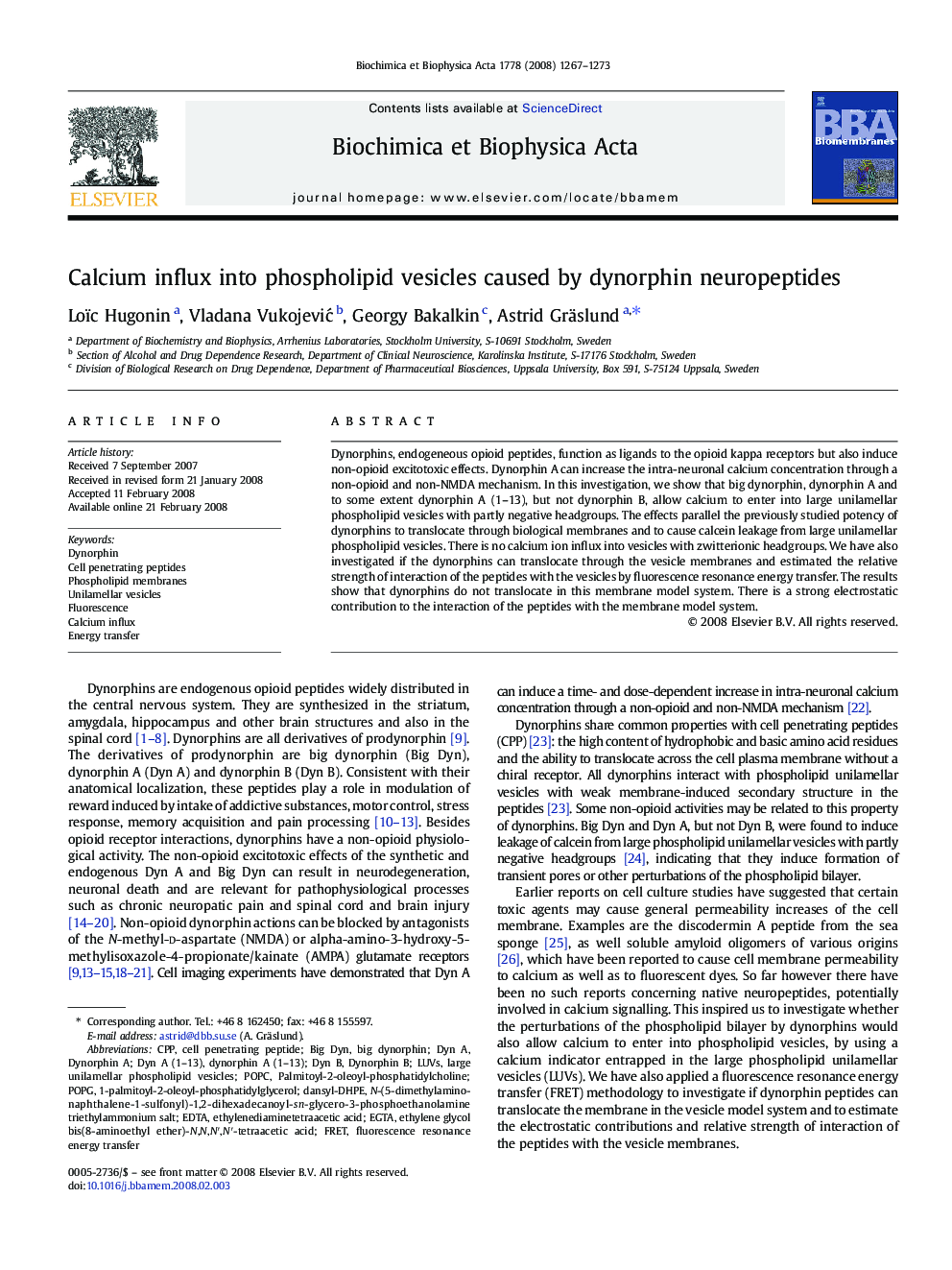| Article ID | Journal | Published Year | Pages | File Type |
|---|---|---|---|---|
| 1945418 | Biochimica et Biophysica Acta (BBA) - Biomembranes | 2008 | 7 Pages |
Dynorphins, endogeneous opioid peptides, function as ligands to the opioid kappa receptors but also induce non-opioid excitotoxic effects. Dynorphin A can increase the intra-neuronal calcium concentration through a non-opioid and non-NMDA mechanism. In this investigation, we show that big dynorphin, dynorphin A and to some extent dynorphin A (1–13), but not dynorphin B, allow calcium to enter into large unilamellar phospholipid vesicles with partly negative headgroups. The effects parallel the previously studied potency of dynorphins to translocate through biological membranes and to cause calcein leakage from large unilamellar phospholipid vesicles. There is no calcium ion influx into vesicles with zwitterionic headgroups. We have also investigated if the dynorphins can translocate through the vesicle membranes and estimated the relative strength of interaction of the peptides with the vesicles by fluorescence resonance energy transfer. The results show that dynorphins do not translocate in this membrane model system. There is a strong electrostatic contribution to the interaction of the peptides with the membrane model system.
